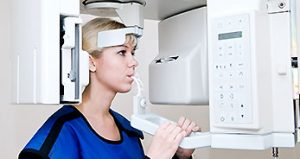
Digital X-rays
Just like cameras, x-rays are now moving into the 21st century, and images digitally captured without the need for film. X-rays, also known as radio-graphs are slowly stepping into the future with the invention of digital x-rays.
Conventional x-rays require the use of photographic-style film and the use of chemical processing to develop these films. On the other hand, digital x-rays use digital sensors or an electronic pad in place of the film. Instead of producing and viewing the images on a film, the images are loaded and stored in a computer and can be viewed using any type of monitor or viewing device.
Advantages of using digital x-ray instead of conventional x-ray
The use of digital x-ray in the medical field has proven to be very beneficial. The advantages include:
- Since digital x-ray eliminates the stage of chemical processing, a significant amount of time is saved.
- Levels of exposure to radiation are significantly lower when using digital x-rays. They may be significantly reduced
- Instead of storing big and bulky films, digital x-rays make use of an archiving system for digital storage.
- Since digital x-rays are stored in computers, they can also be sent to other computers or devices and are readily viewable by other doctors. With conventional x-rays, the films need to be personally viewed by the doctor for them to make a diagnosis or conclusion. With digital x-rays, transferring and sharing the images are easier.
- Digital x-rays eliminate the need to retake x-rays and further exposing the patient to radiation. They can be manipulated, resized or enhanced as needed. The images can be enlarged, reduced, zoomed in or out, lightened or darkened.
- Digital x-rays can be stored in CDs or other storage devices for the patient to take home. They can also be electronically transmitted if needed.
- It is also easier to produce multiple copies just by printing out the digital x-rays.
- Digital x-rays are earth-friendly. It eliminates the need to use hazardous chemicals used in developing conventional x-rays.
Types of digital x-rays
Digital x-rays may be produced through two types of systems:
- Computed radiography – Computed radiography, also known as indirect radiography, is quite similar to conventional radiography in terms of equipment, but instead of using a film, an imaging plate, usually placed inside a cassette, is used to record the image. The plates are then radiated so that it can be digitally scanned using an image reading device.
- Direct radiography – With direct radiography, the image is captured directly on a flat panel detector, without using a cassette. Direct radiography equipment is directly connected to the computer as well. With this method, there is no separate image readout step.
Steps in capturing a digital x-ray
There are four basic steps in capturing a digital x-ray:
- Exposing a detector to x-rays
- X-rays are then absorbed by the detector
- The image is derived using a software
- Archiving of the processed image into a picture archiving and communication system (PACS)







